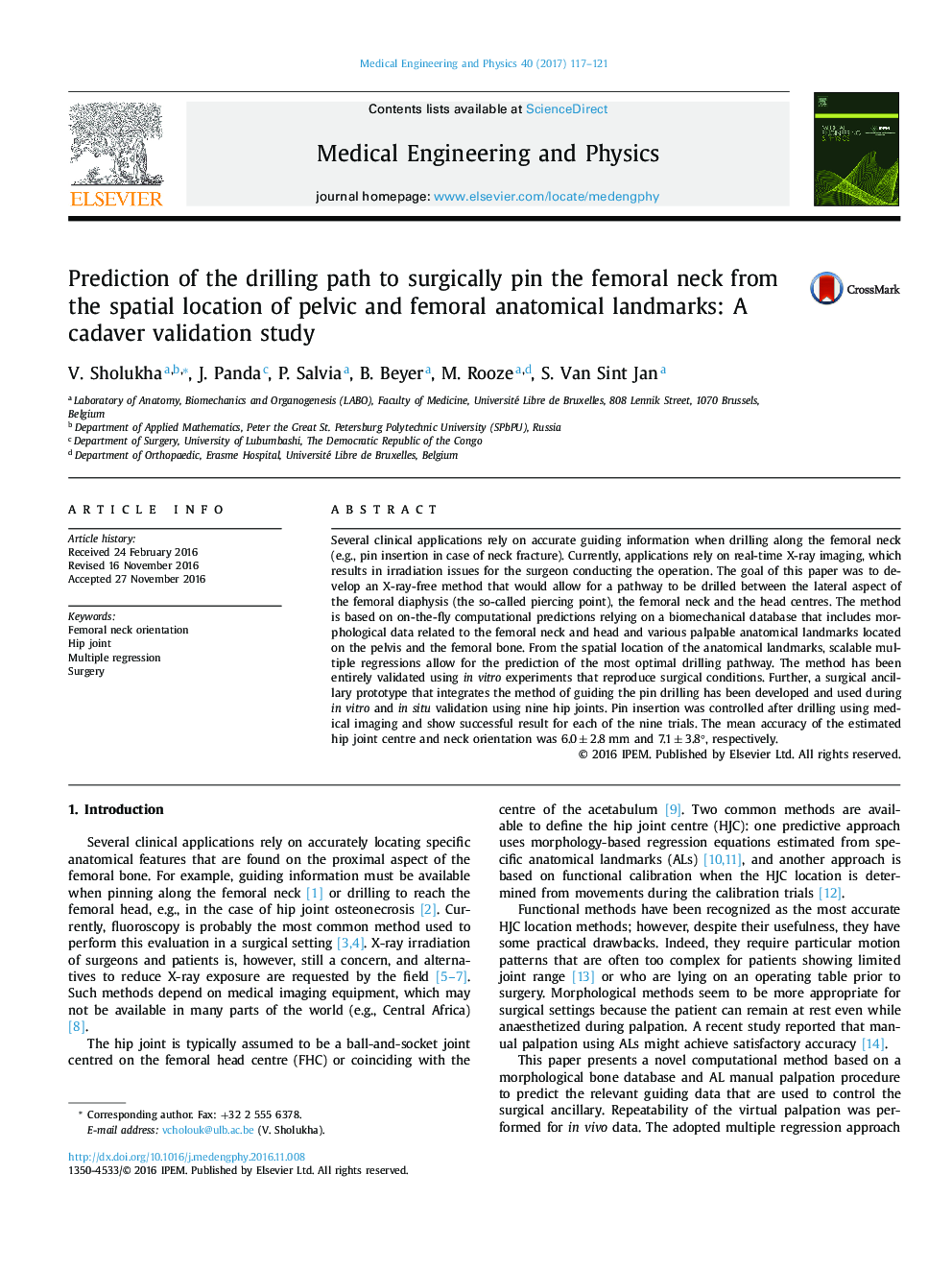| کد مقاله | کد نشریه | سال انتشار | مقاله انگلیسی | نسخه تمام متن |
|---|---|---|---|---|
| 5032726 | 1471134 | 2017 | 5 صفحه PDF | دانلود رایگان |
- Developing an X-ray-free method that would allow for a pathway to be drilled between the lateral aspect of the femoral diaphysis the femoral neck and the head centres.
- Scalable multiple regressions allow for the prediction of the most optimal drilling pathway.
- Surgical ancillary prototype that integrates the method of guiding the pin drilling has been developed.
Several clinical applications rely on accurate guiding information when drilling along the femoral neck (e.g., pin insertion in case of neck fracture). Currently, applications rely on real-time X-ray imaging, which results in irradiation issues for the surgeon conducting the operation. The goal of this paper was to develop an X-ray-free method that would allow for a pathway to be drilled between the lateral aspect of the femoral diaphysis (the so-called piercing point), the femoral neck and the head centres. The method is based on on-the-fly computational predictions relying on a biomechanical database that includes morphological data related to the femoral neck and head and various palpable anatomical landmarks located on the pelvis and the femoral bone. From the spatial location of the anatomical landmarks, scalable multiple regressions allow for the prediction of the most optimal drilling pathway. The method has been entirely validated using in vitro experiments that reproduce surgical conditions. Further, a surgical ancillary prototype that integrates the method of guiding the pin drilling has been developed and used during in vitro and in situ validation using nine hip joints. Pin insertion was controlled after drilling using medical imaging and show successful result for each of the nine trials. The mean accuracy of the estimated hip joint centre and neck orientation was 6.0â±â2.8 mm and 7.1â±â3.8°, respectively.
Journal: Medical Engineering & Physics - Volume 40, February 2017, Pages 117-121
